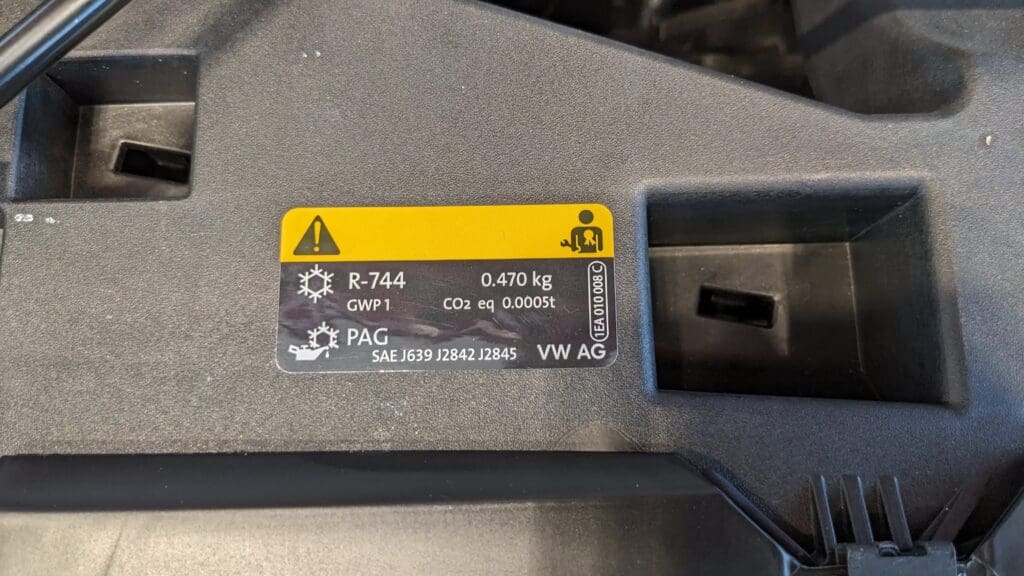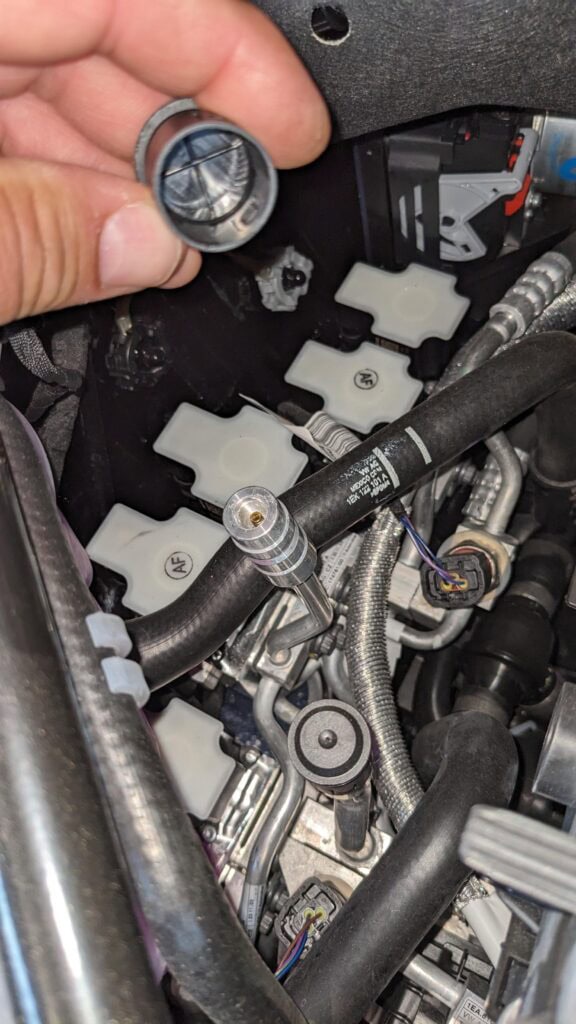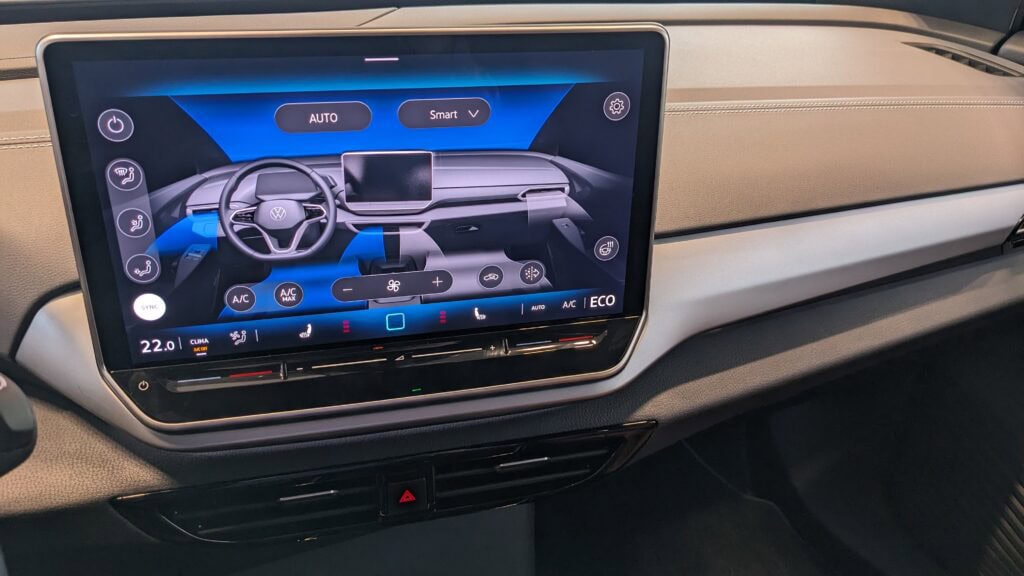VW selling ID.4 EVs in Canada with R-744 (CO2) Heat Pump Systems
By Steve Schaeber, MACS Director of Training – Published on 9/30/2025
Volkswagen has been a pioneer in the industry for R-744 and as of 2024 they have deployed more CO2 heat pump systems in passenger vehicles than any other automaker in the world. Most of their components are supplied by Hanon Systems, which surpassed 500,000 systems in that year.
In North America, VW has been selling the ID.4 EV in Canada and the US since the 2021 model year. Early vehicles were shipped from overseas but since 2023 they’ve been assembled at the company’s Chattanooga, Tennessee facility.
Models sent to US dealers have been fitted with R-1234yf systems, but many destined for Canada have employed R-744 heat pumps.
In July 2024, when MACS participated in the UN Montreal Protocol meetings in Québec, we visited a local VW dealership to see which vehicles they had in stock. Luckly for us, they had two ID.4s with CO2 heat pumps in the showroom. See Figure 1.
The dealership personnel were happy to show us the cars and let us take pictures. We were allowed to open the hood and see the R-744 system first hand. See Figures 2, 3, 4.
Since they are selling CO2 systems in Canada, VW dealers there are required to have an R-744 A/C machine in the shop to service the vehicles. In the US however, it’s not a requirement for VW dealers. However, we did learn that Audi dealers are required to have the same R-744 service equipment. This makes us think that either Audi is planning to launch R-744 in the US (probably in the ID.4’s cousin model, the Audi Q4 e-tron), or that VW will ask Audi dealers in the US to support the company’s CO2 systems in the States.

Figure 1: VW dealer in Boucherville, Québec had two VW ID.4s in their showroom with R-744 heat pump systems. Credit: Steve Schaeber

Figure 2: The underhood SAE J639 label shows the system uses R-744. Interesting to see that VW includes the refrigerant’s GWP and CO2 equivalent. Credit: Steve Schaeber

Figure 3: Service port caps used with R-744 don’t screw down onto the port. Instead, they’re a snug press fit, designed to safely blow off in the case of a leak. Credit: Steve Schaeber

Figure 4: Since the ID.4 is an EV, we were allowed to “start the car” inside the showroom. I wanted to see how fast the A/C started blowing cold air, and boy was I surprised. It didn’t take more than 25 seconds for the system to start blowing really cold air. Nice! That’s what I call a fast pull-down time. Credit: Steve Schaeber

About the author: Steve Schaeber is Editor-In-Chief and Director of Training and Regulatory Affairs at MACS, the Mobile Air Climate Systems Association, where he engages with industry and government stakeholders. Steve’s focus is on refrigerant lifecycle management in the mobile air conditioning and thermal management sector through training and best service practices, including the use of proper tools and equipment to recycle refrigerant and minimize its release into the atmosphere. Steve serves as vice chairman of the SAE Interior Climate Control Service Committee and secretary of SAE HFTC6 (Human Factors Technical Committee).
You can reach Steve at sschaeber@macsmobileairclimate.org
Learn More
Leave a Reply